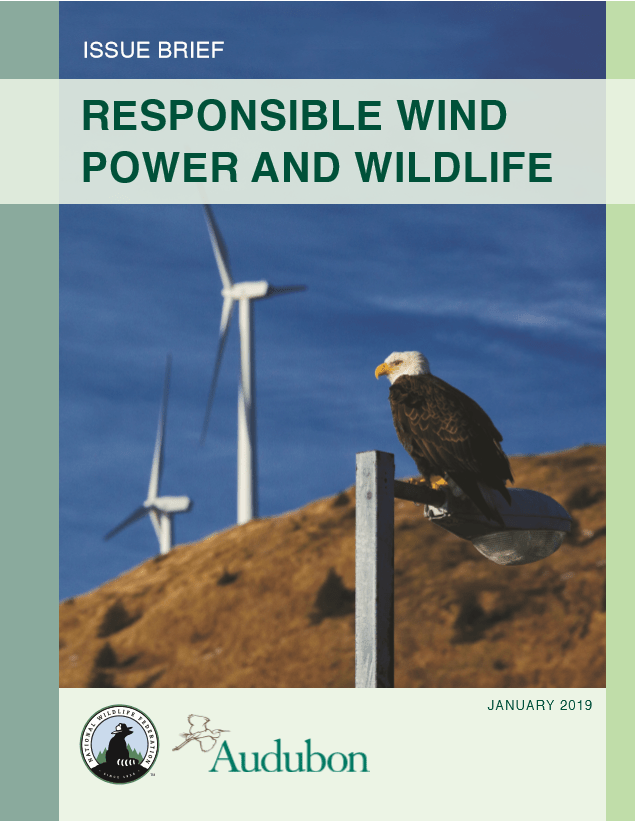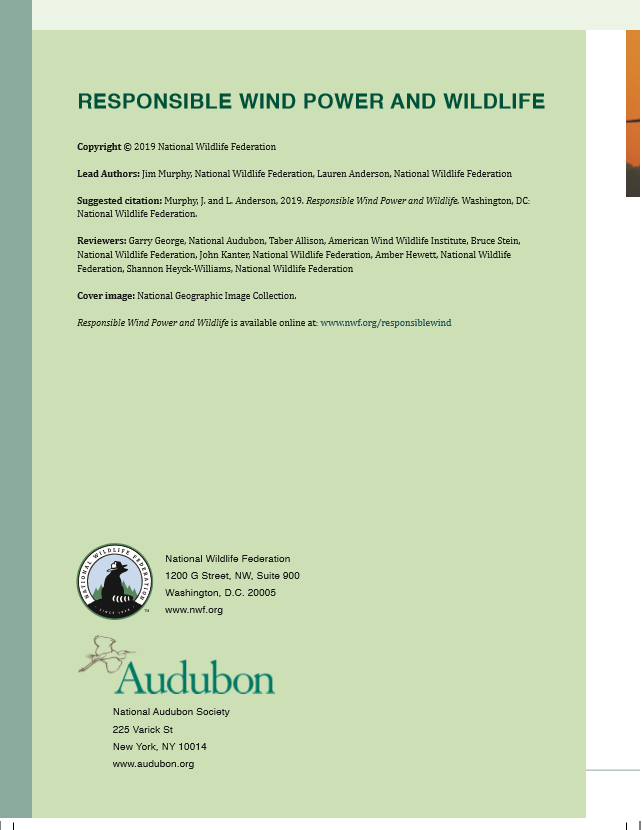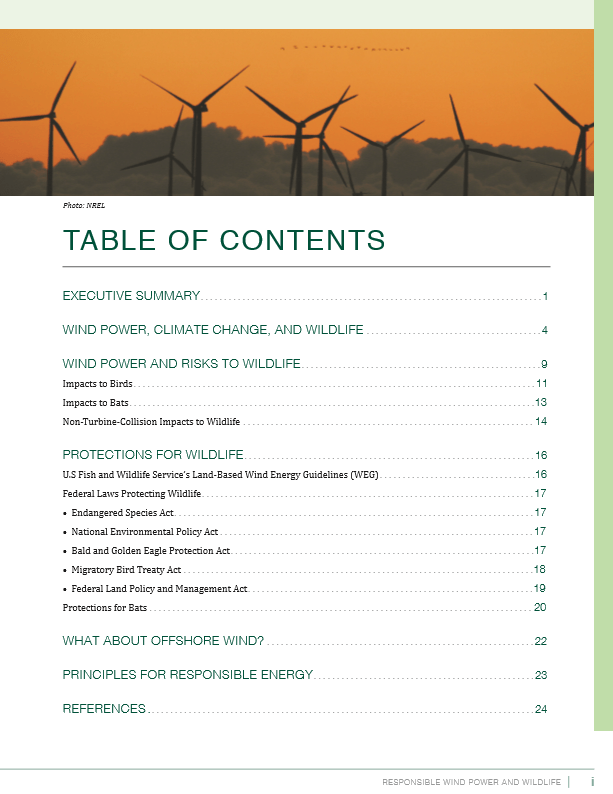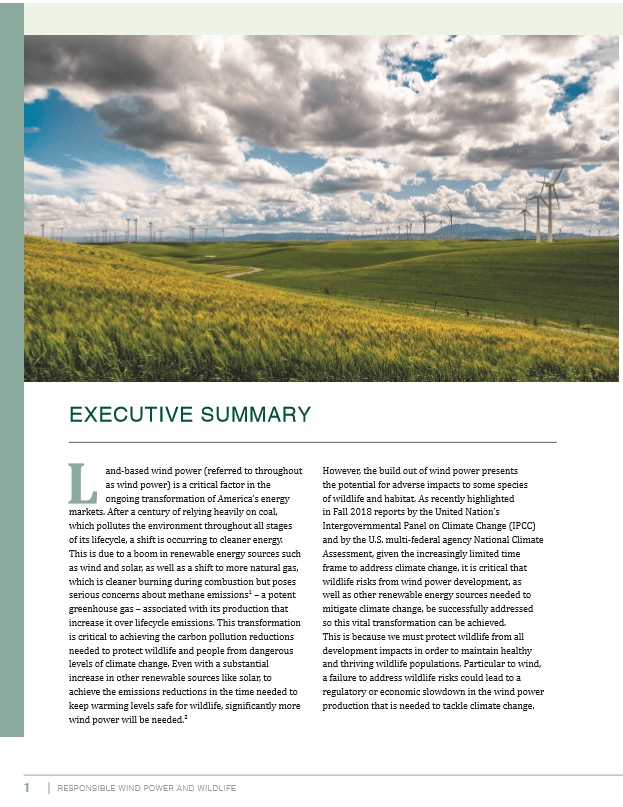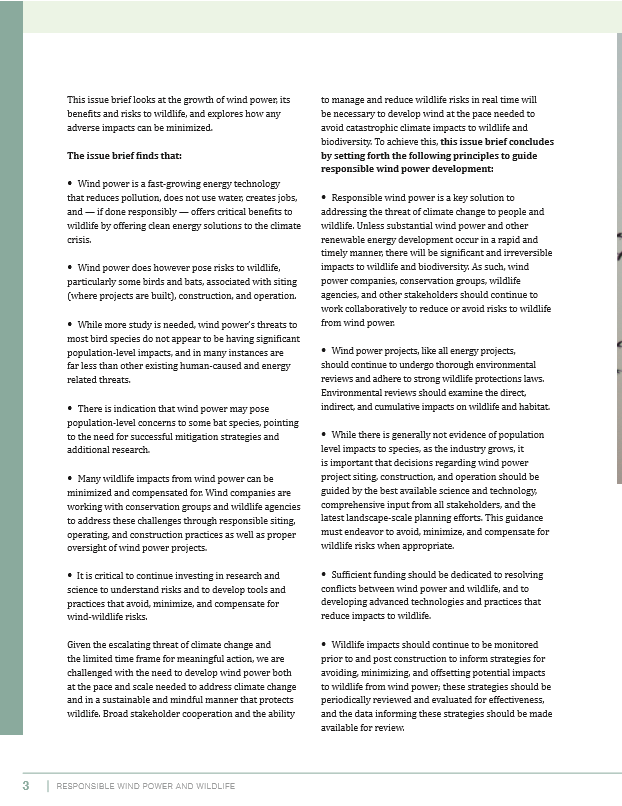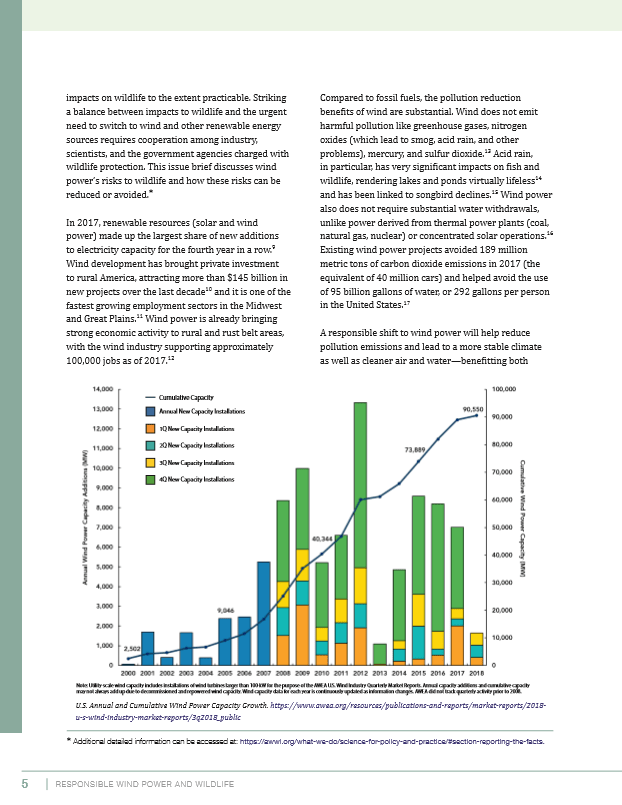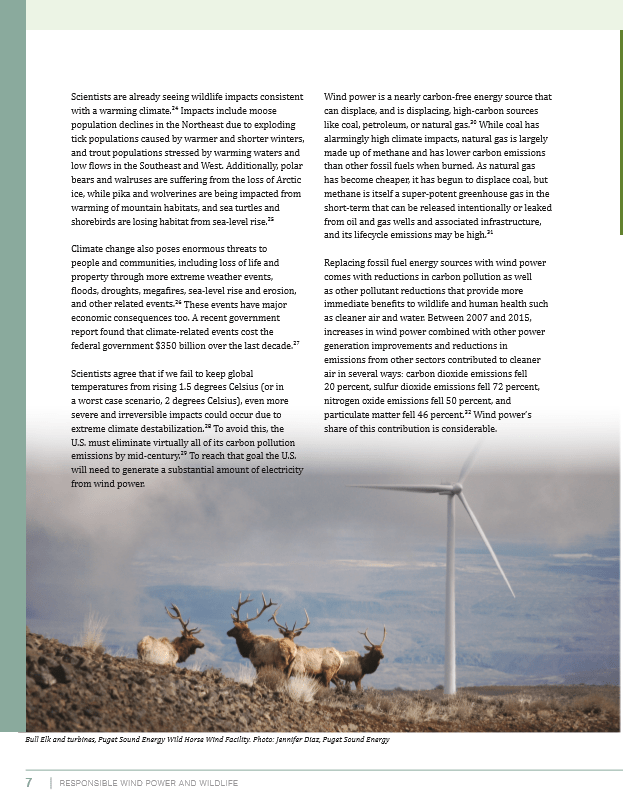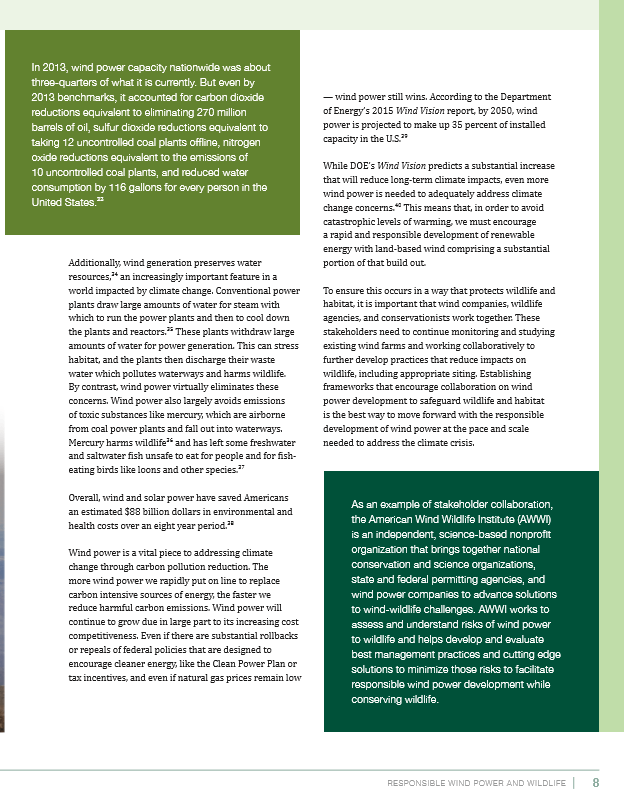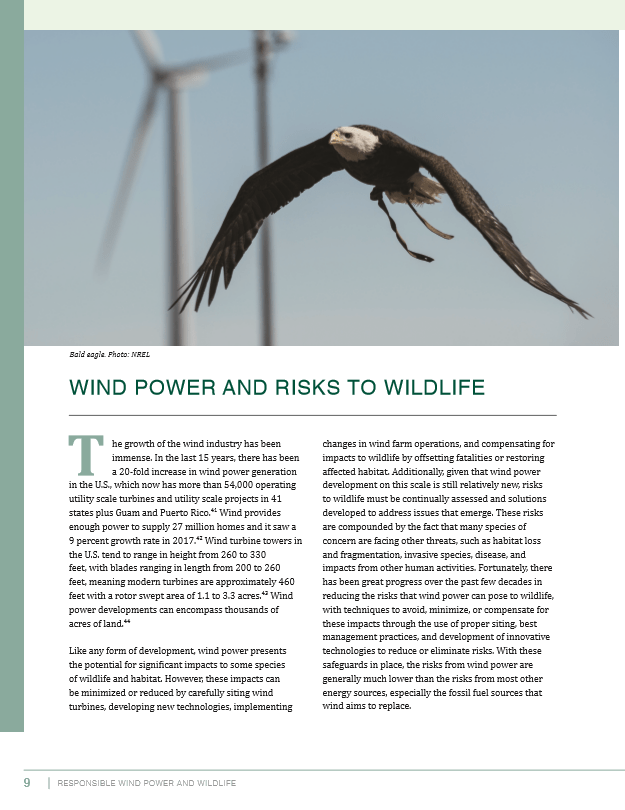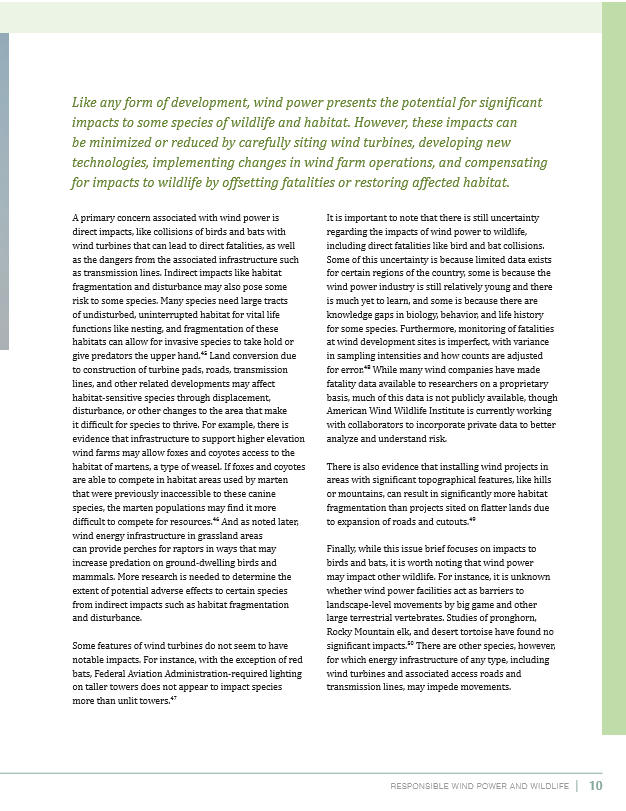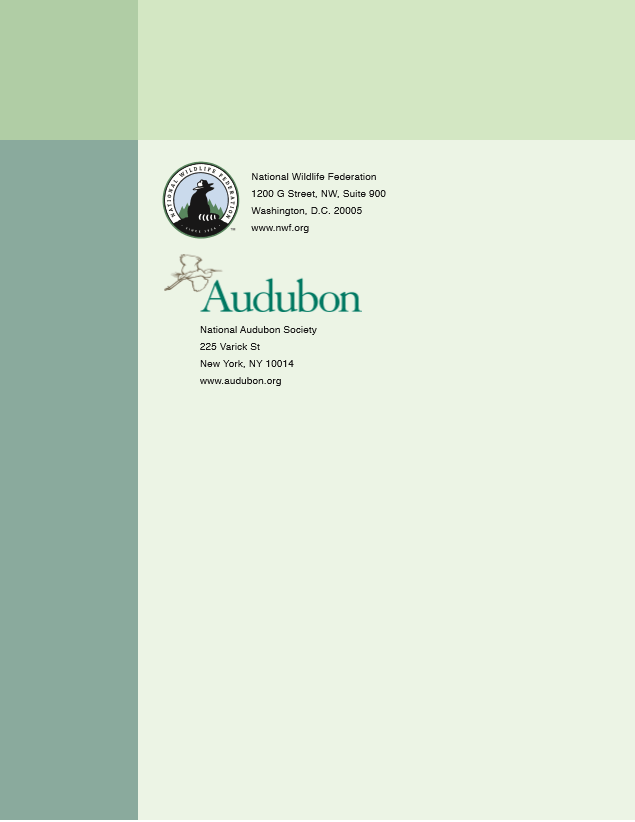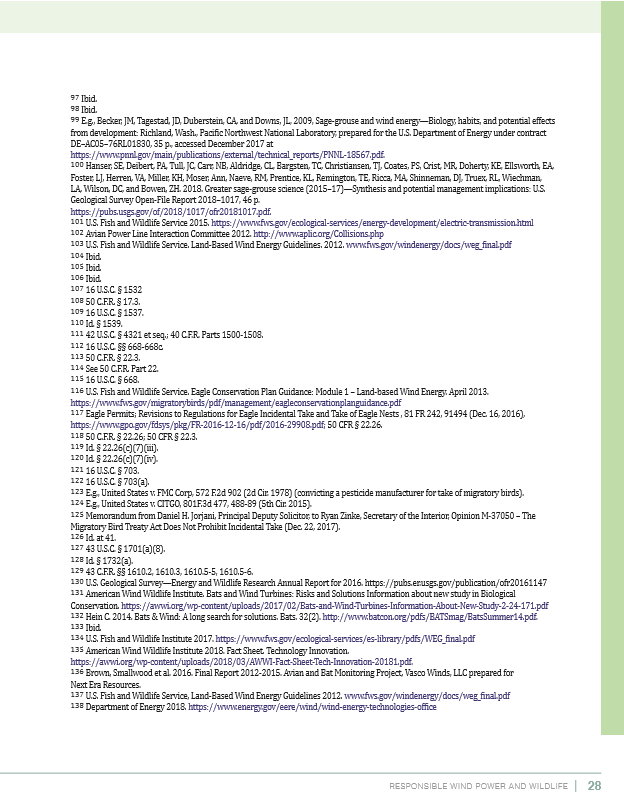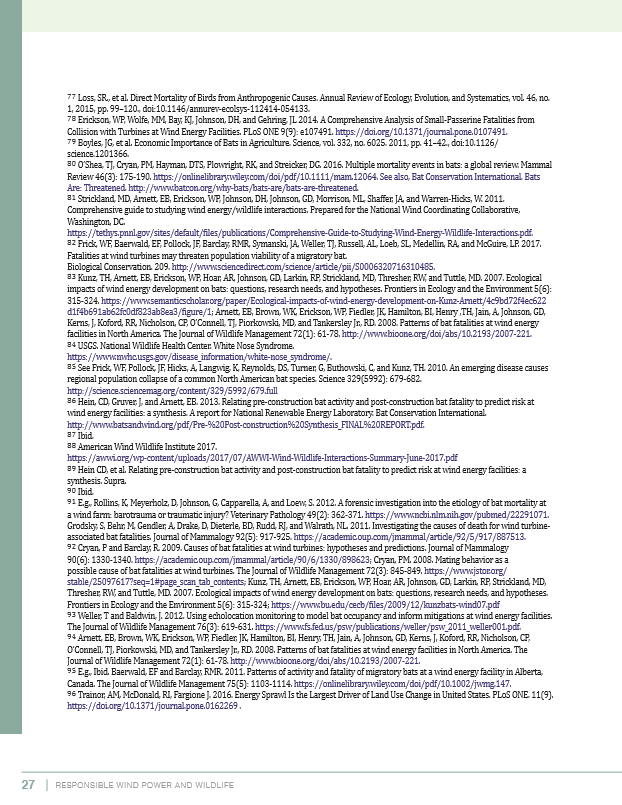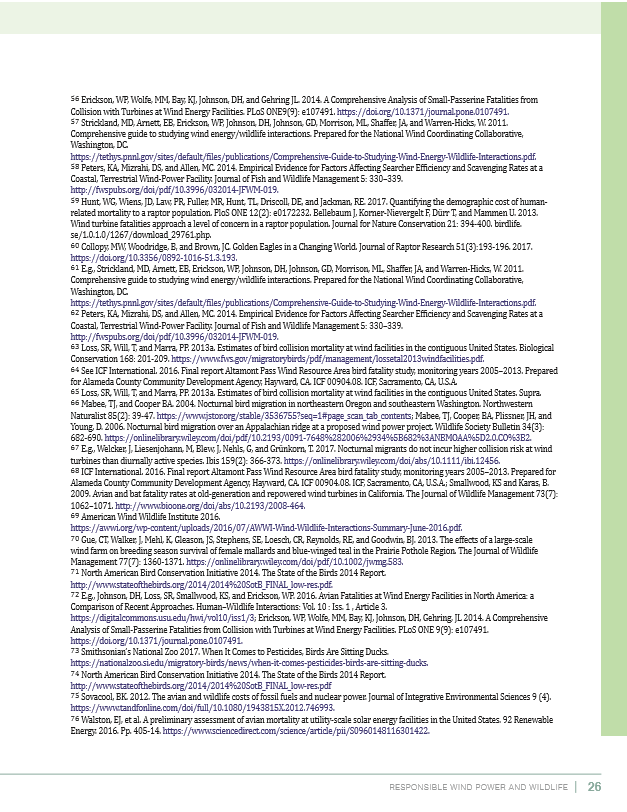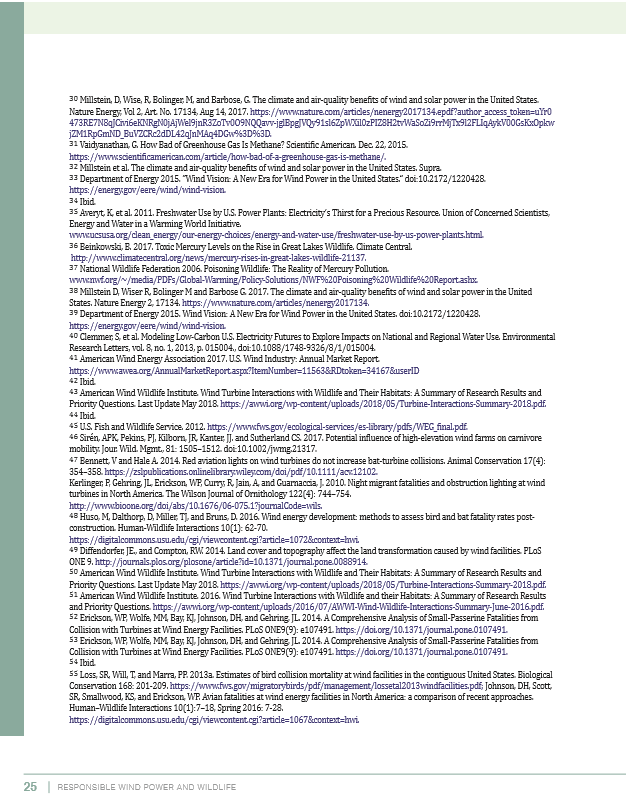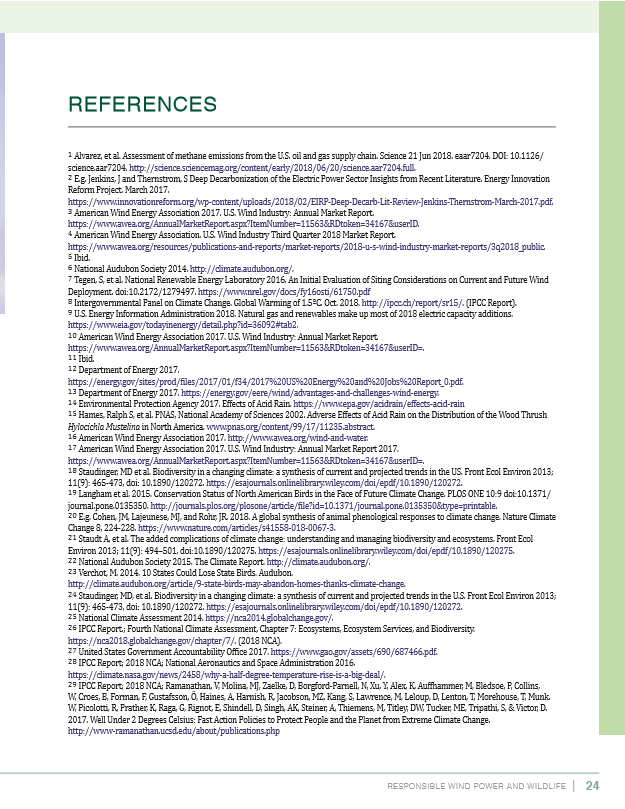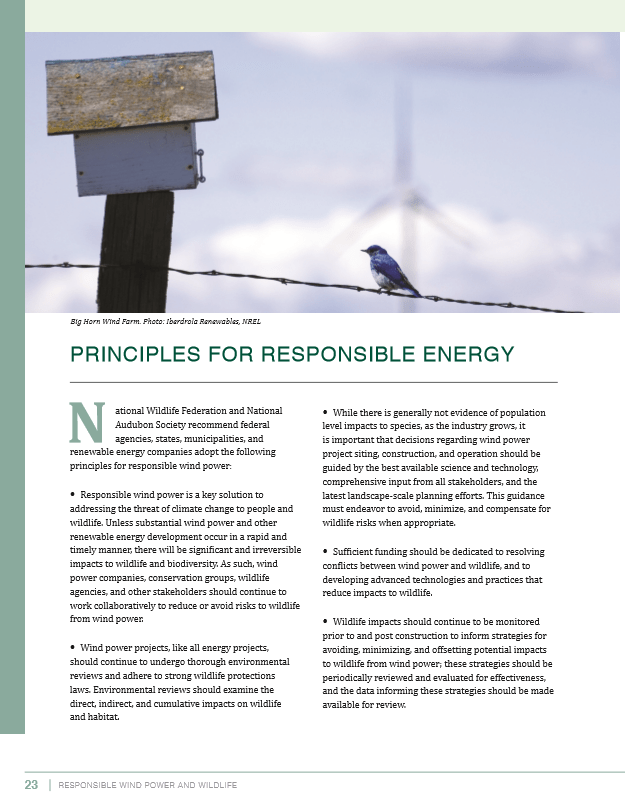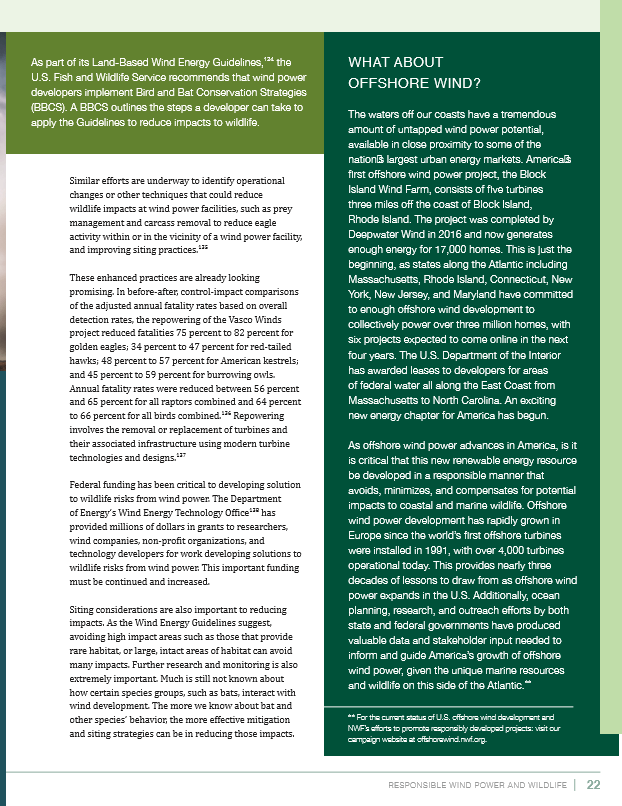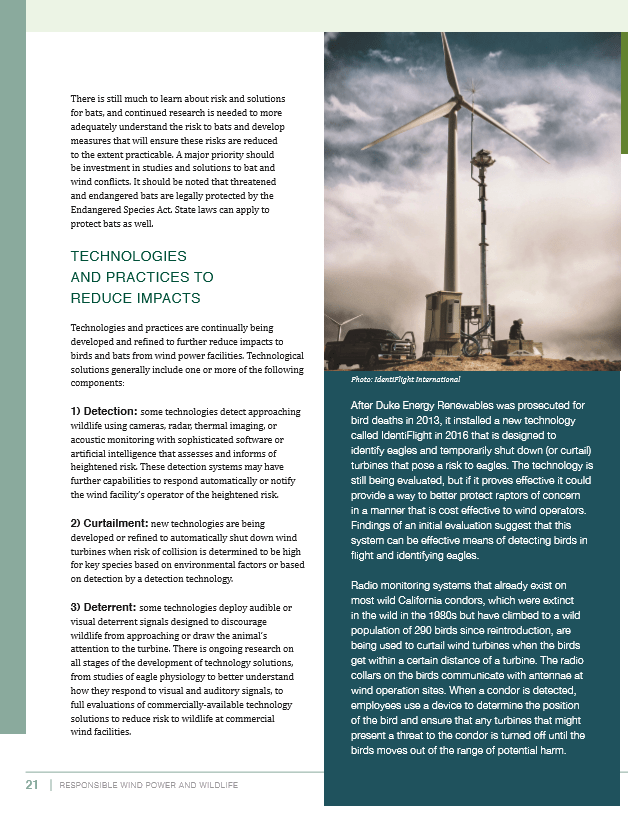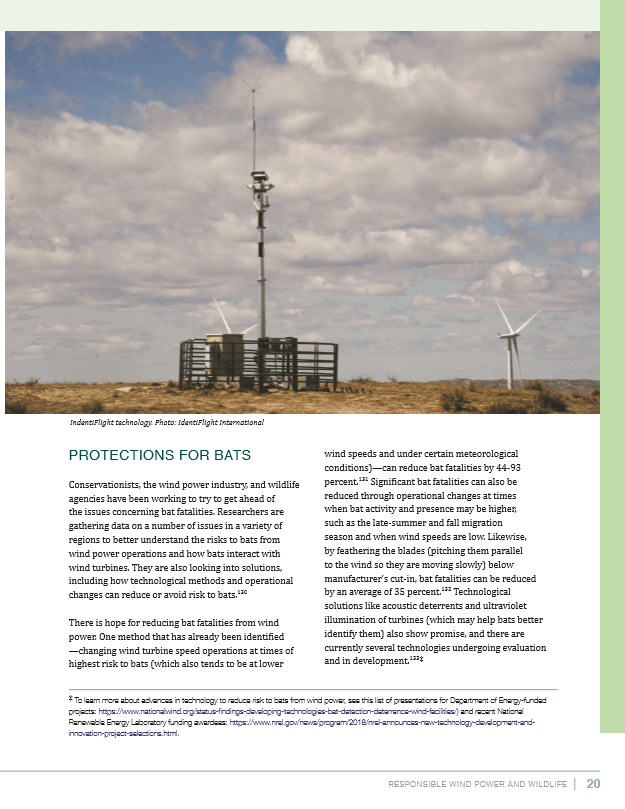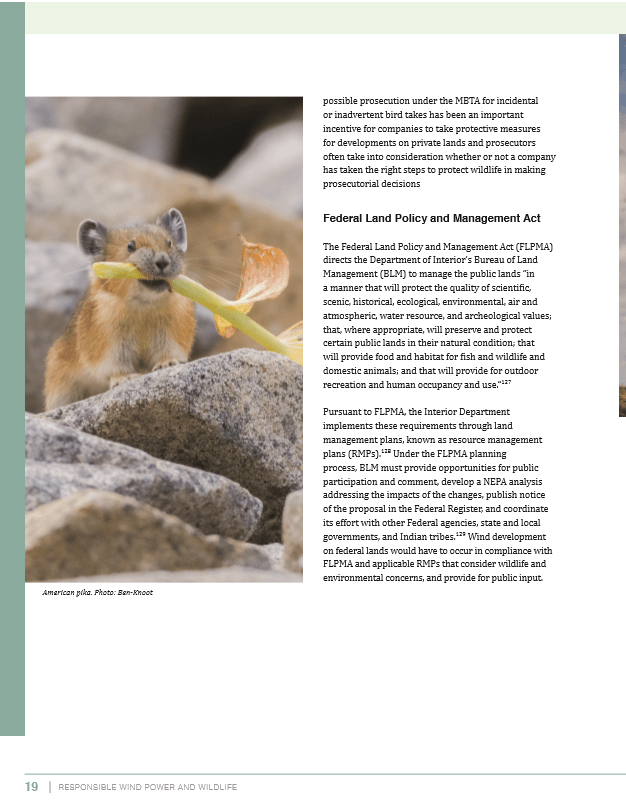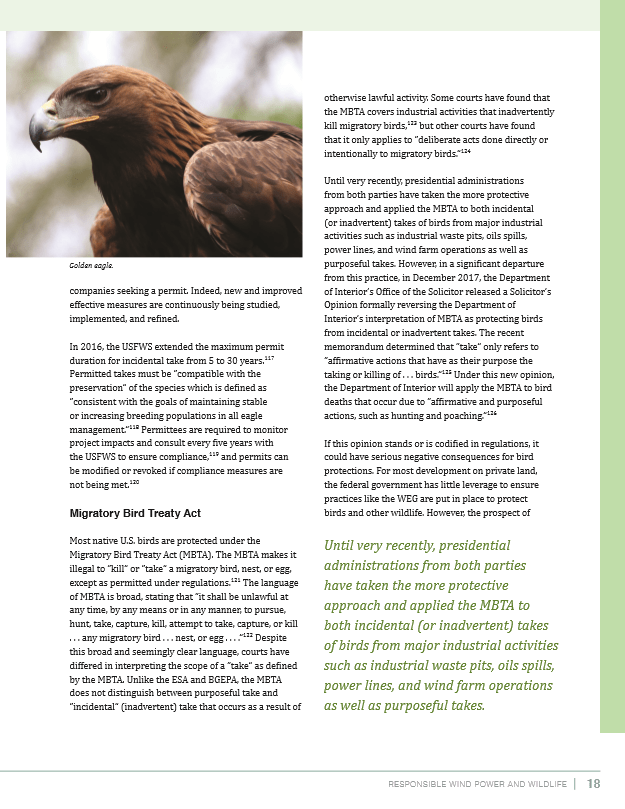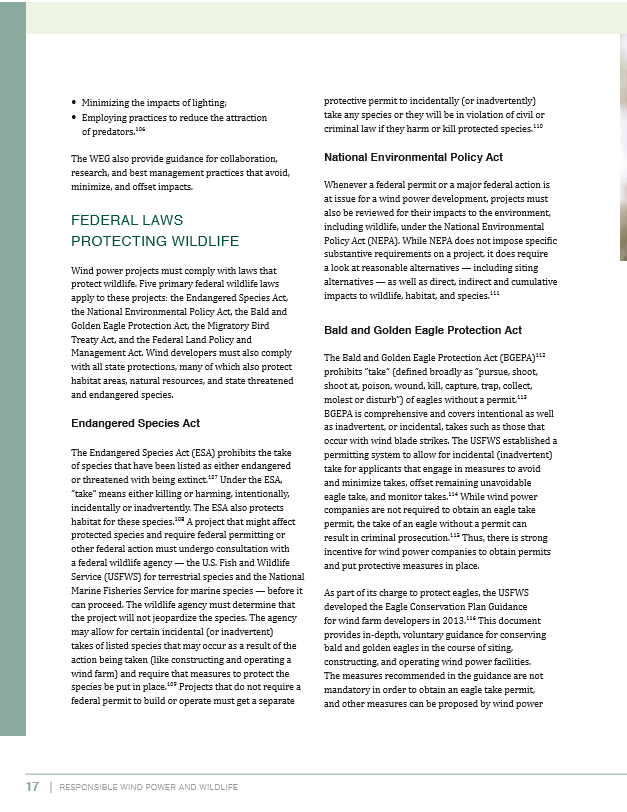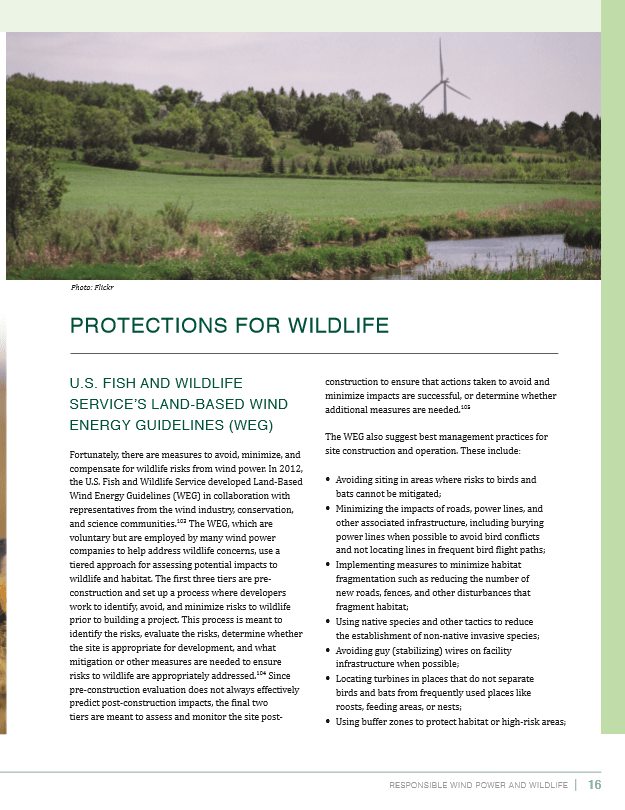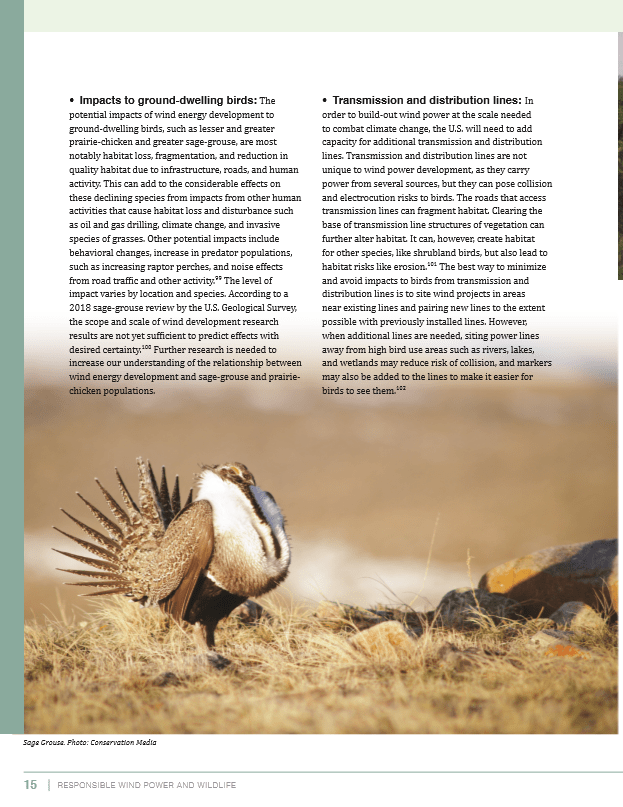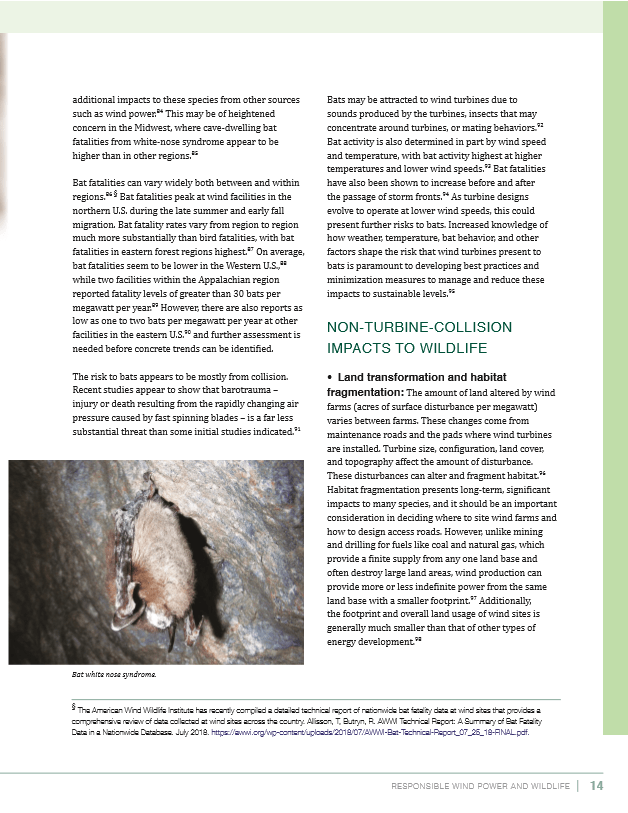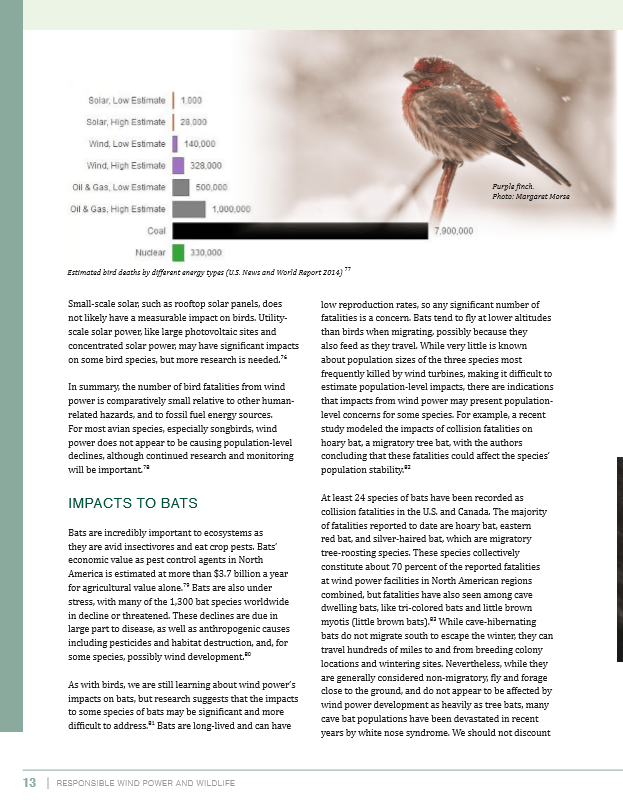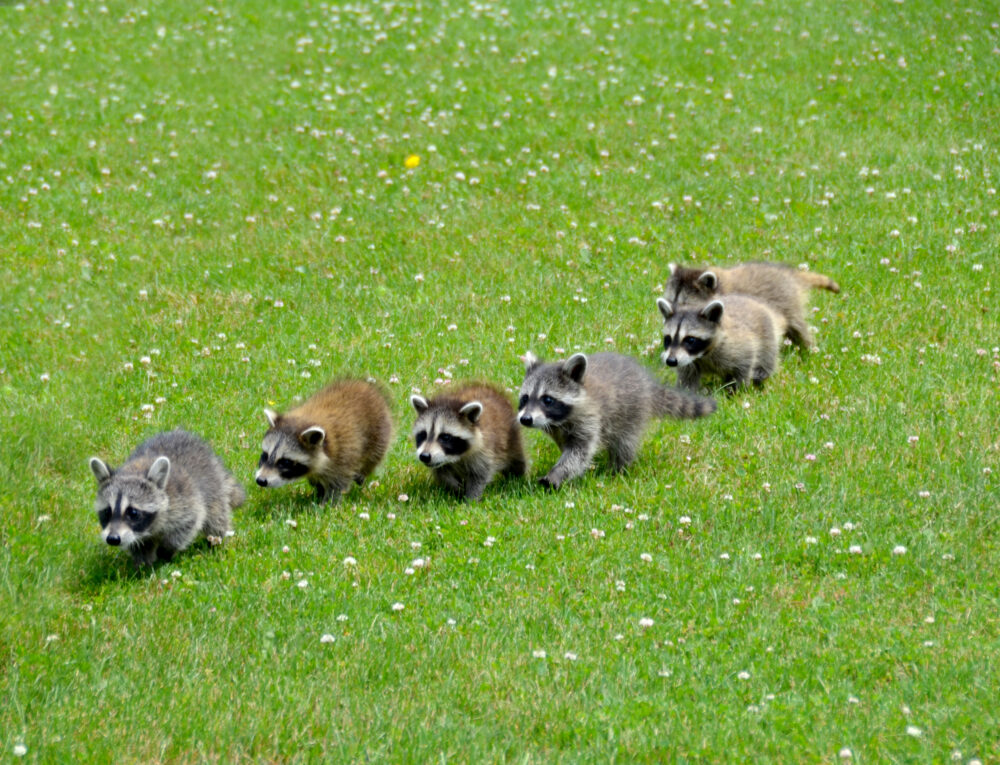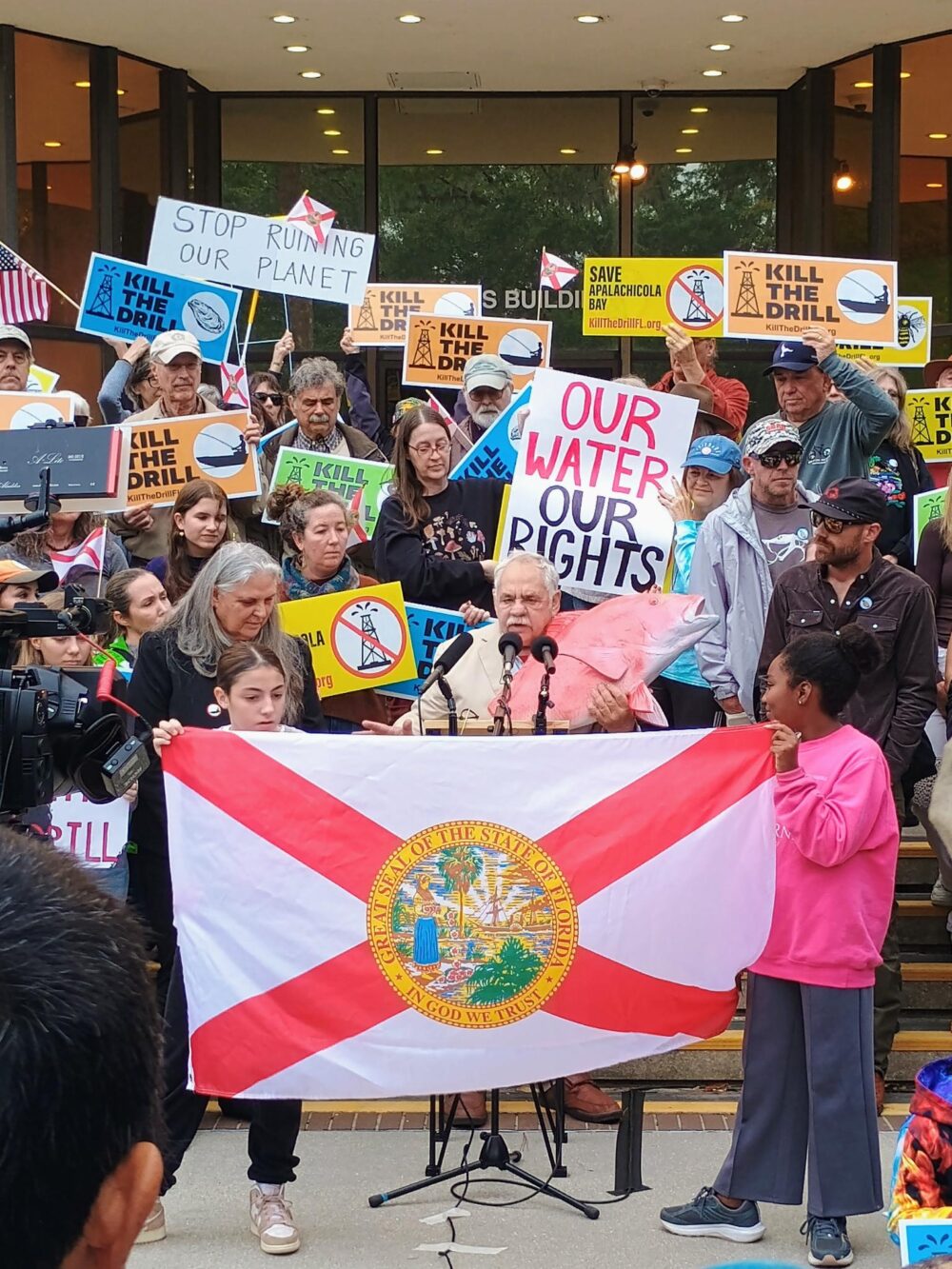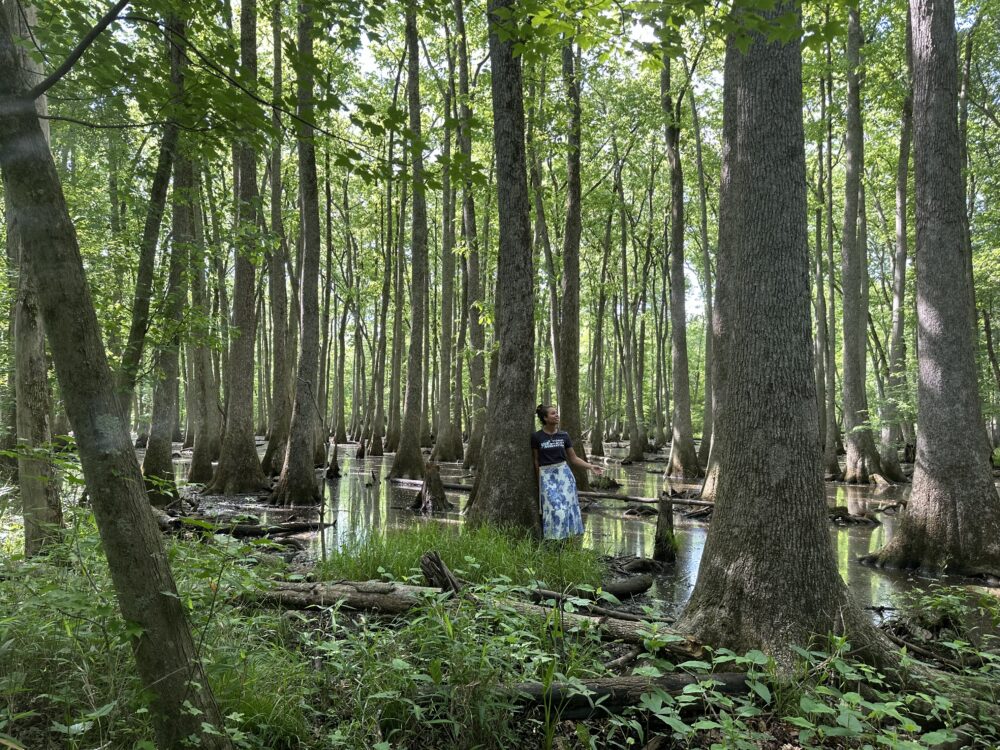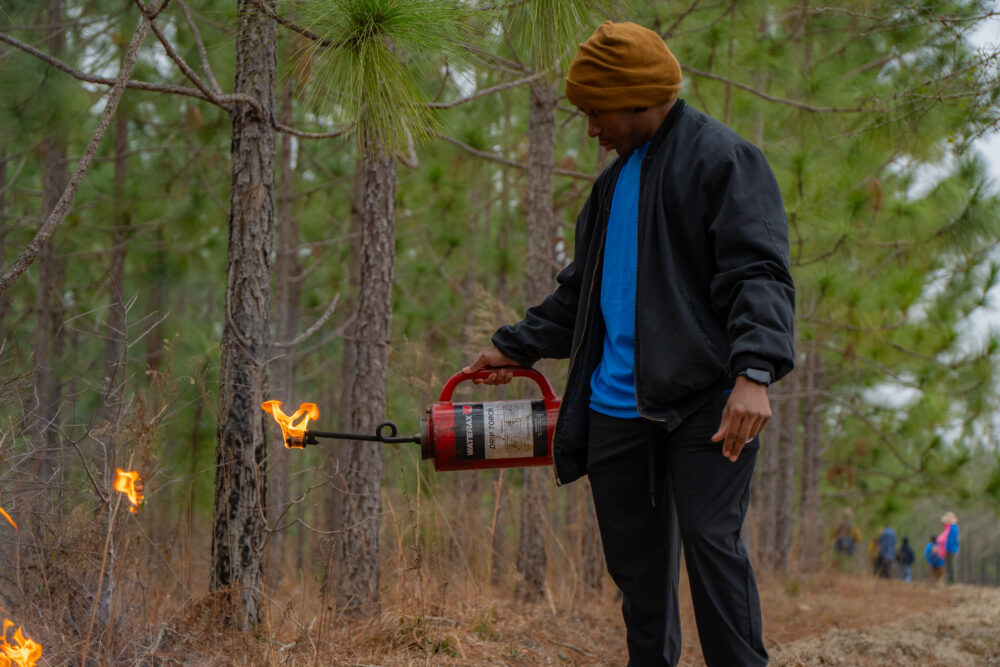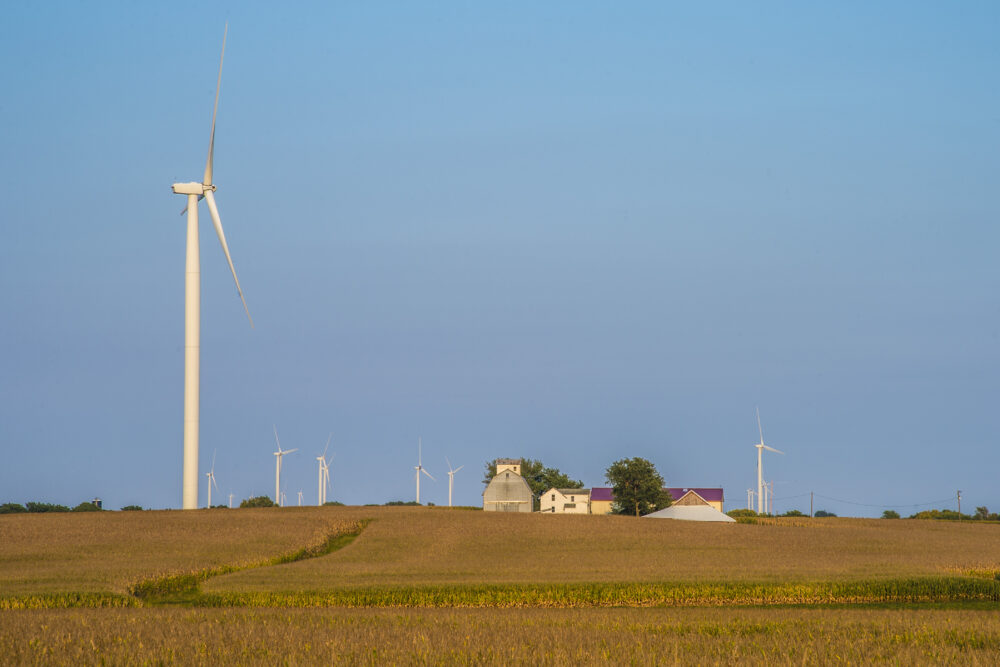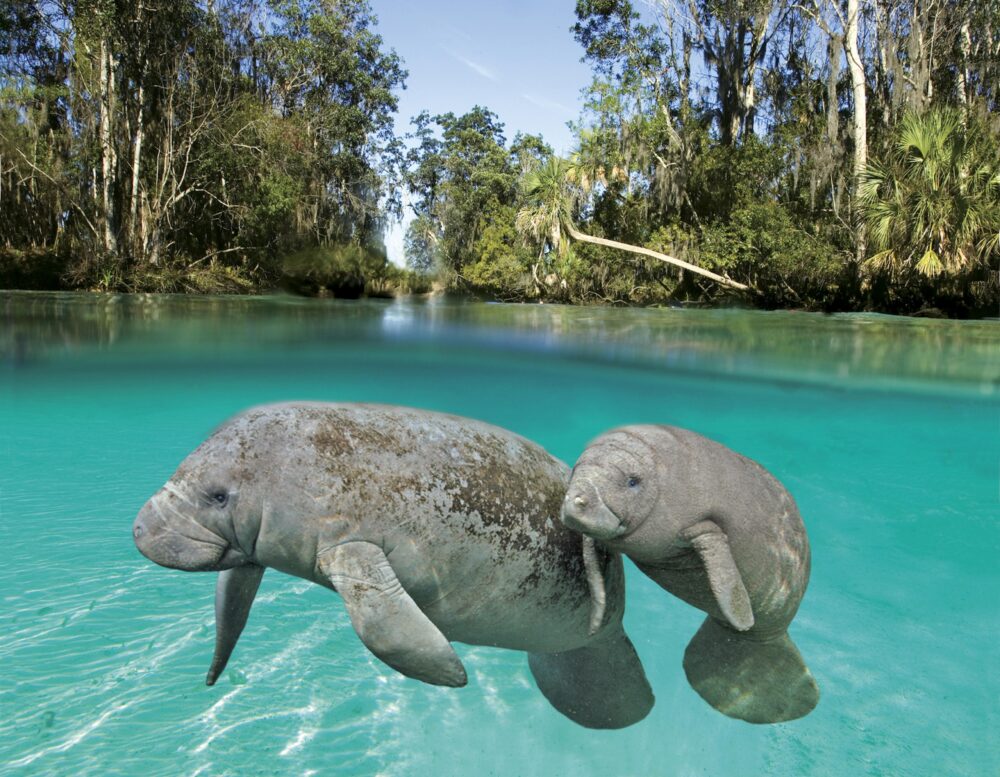We have much more to do and your continued support is needed now more than ever.
Responsible Wind Power: Protecting Wildlife While Solving Climate Change
The return of the California condor is one of America’s most heartening wildlife stories. Due to habitat loss, poaching, and lead poisoning, this most magnificent and largest of North American birds was nearly extinct. In an extreme and controversial act of wildlife conservation, the last 27 remaining individuals in the wild were captured and put into a captive breeding program in 1987.
Four years later they were reintroduced into the wild. Today there are nearly 500 living condors with approximately 300 in the wild gracing the skies of California, northern Mexico, Arizona, and Utah. While lead poisoning remains the chief danger to the bird, the growth of wind power in their habitat also poses a threat.
A new issue brief by the National Wildlife Federation and the National Audubon Society talks about how we can confront the climate crisis by building responsible wind power while protecting species like the California condor along the way.
Protecting the Condor

For the long-lived and slow breeding California condor, every fatality is a cause for serious concern. So when wind development came to the birds’ landscape, turbine strikes were a worrisome threat.
Here’s where technology came in: Wind companies wishing to build in the condors’ range teamed up with scientists and conservationists to craft a solution. Since virtually all condors are radio tagged, wind farms would use the radio technology to detect when a condor might be flying into an area where a strike was a possibly. If one did, the farms could curtail (stop) turbines that posed a threat to the bird.
While wind farms like the 700-megawatt Tehachapi Pass wind farm have sprouted in condor habitat, technology has helped thus far to avoid any harm to the condors.
The story of the California condor is an example of how technology and stakeholder collaboration can ensure that climate solutions protect wildlife along the way.
The Climate Threat to Wildlife
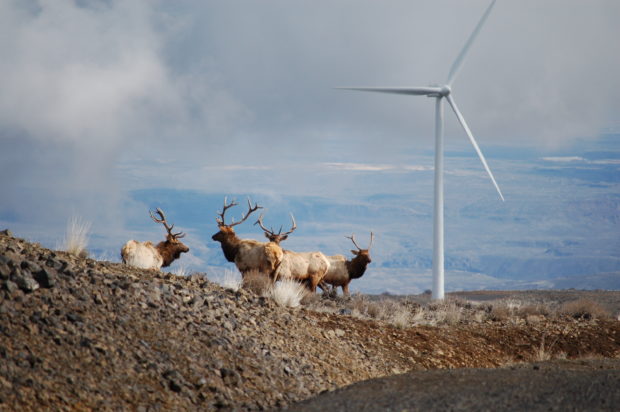
Climate change presents an unprecedented threat to wildlife – one that could drive species to extinction and ecosystems to collapse. A 2014 study by National Audubon Society showed that 314 of 588 bird species modeled would lose more than half of their 2010 geographic range by 2080 under likely climate scenarios. Similar harm is occurring or awaits other species: moose may be extirpated from much of their habitat in the contiguous United States; many streams may become too warm for trout or salmon; mountain species like pika and wolverines could run out of space to move higher for the cooler temperatures they need.
Some of these losses will sadly be inevitable. However, the amount of warming will make an enormous difference in whether we can preserve many species and keep important ecosystems intact.
Scientists have warned that warming above 2 degrees Celsius will likely result in chain reactions with catastrophic consequences for wildlife and ecosystems. But a recent international study demonstrates that the difference between 1.5 degrees Celsius and 2 degrees Celsius of warming has substantial wildlife implications.
For instance, of 105,000 species studied, the number of insects, plants, and vertebrae that are projected to lose over half of their climatically determined geographic are three times as high for insects, and twice as high for plants and vertebrae with if temperatures rise 2ºC as opposed to 1.5ºC. This additional half degree of warming could also result in a tenfold difference in the number of ice-free summers in the arctic, as well as the difference between maintaining some coral reefs versus a virtual wipe out of all coral reefs around the globe.
Keeping Wildlife Safe From Climate Change with Wind Power
The pathways to a climate safe future are narrow but clear: we must dramatically reduce our carbon emissions and begin to draw carbon from the atmosphere through land use changes and other means. This means a ramp up of renewable energy. Recent reports tell us that we must get about 50 percent of our energy from renewable energy sources by 2030 and almost all of it by 2050. Currently, the U.S. is at about 17 percent.
Achieving this will require a substantial build out of wind power. Much progress has made in the last 15 years: we now have enough wind energy to power about 27 million homes, with wind power comprising at least ten percent of the power in 14 states, and over 30 percent of the power in Iowa, South Dakota, Kansas, and Oklahoma. Yet, estimates show that we must expand land-based wind energy generation four to five times by 2050 to keep emissions at safe levels.
Protecting Wildlife Along the Way
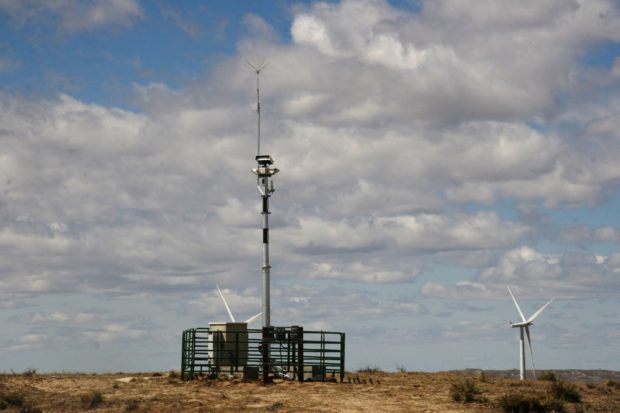
To do this responsibly, we have to protect wildlife along the way. Wind power poses immediate threats to wildlife, including direct fatalities to birds and bats from turbine strikes, as well as habitat disturbance. However, it also poses benefits in addition to carbon pollution reduction, such as comparatively little water use and the virtual elimination of harmful air and water emissions like mercury, wastewater, sulfur dioxide, and smog-causing emissions associated with traditional power plants.
As detailed in the recently released issue brief, protecting wildlife means ensuring that wind development is properly sited and operated to avoid, minimize, and compensate for impacts. It also means keeping in place strong laws that protect wildlife, like protections for migratory birds, eagles, and threatened and endangered species, some of which are currently under attack. And, as with all energy development, we must ensure that the environmental impacts of wind projects are evaluated and addressed.
As demonstrated by the innovations that are protecting the condor, collaboration between conservationists, industry, communities, and wildlife professionals can secure a bright future for wildlife now and in the future as we tackle climate change through solutions like wind power.
Learn more from our new issue brief, Responsible Wind Power & Wildlife
VIEW REPORTInspired to take action for wildlife and responsible wind?
Take action to support offshore wind power today! (Below action alert available for residents of CT, DE, FL, GA, MA, ME, NC, NH, NJ, NY, RI, SC, & VA).
TAKE ACTION
